Why the Fear-mongering? Only One Democratic State is Possible in Palestine and Israel

Apartheid and occupation are not the answer; co-existence is. (Photo: Tamar Fleishman, PC)
By Ramzy Baroud
Long before December 28, when Secretary of State, John Kerry took the podium at the Dean Acheson Auditorium in Washington DC to pontificate on the uncertain future of the two-state solution and the need to save Israel from itself, the subject of a Palestinian state has been paramount.
In fact, unlike common belief, the push to establish a Palestinian and a Jewish state side-by-side goes back years before the passing of United Nations Resolution 181 in November 1947. That infamous resolution had called for the partitioning of Palestine into three entities: a Jewish state, a Palestinian state and an international regime to govern Jerusalem.
A more thorough reading of history can pinpoint multiple references to the Palestinian (or Arab state) between the Jordan River and the Mediterranean Sea.
The idea of two states is western par excellence. No Palestinian party or leader had ever thought that partitioning the holy land was ever an option. Then, such an idea seemed preposterous, partly because, as Ilan Pappe’s ‘Ethnic Cleaning of Palestine‘ shows, “almost all of the cultivated land in Palestine was held by the indigenous population (while) only 5.8% percent was in Jewish ownership in 1947.”
An earlier, but equally important reference to a Palestinian state was made in the Peel Commission, a British commission of inquiry, led by Lord Peel that was sent to Palestine to investigate the reasons behind the popular strike, uprising and later armed rebellion that began in 1936 and lasted for nearly three years.
The “underlying causes of the disturbances” were two, resolved the commission: Palestinian desire for independence, and the “hatred and fear of the establishment of the Jewish national home.” The latter was promised by the British government to the Zionist Federation of Great Britain and Ireland in 1917 which became known as the ‘Balfour Declaration.’
The Peel Commission recommended the partition of Palestine into a Jewish state and a Palestinian state, which would be incorporated into Transjordan, with enclaves reserved for the British Mandate government.
In the time between that recommendation eighty years ago, and Kerry’s warning that the two-state solution is “in serious jeopardy,” little has been done in terms of practical steps to establish a Palestinian state. Worse, the US has used its veto power in the UN repeatedly to impede the establishment of a Palestinian state, as well as utilizing its political and economic might to intimidate others from recognizing (although symbolically) a Palestinian state. It has further played a key role in funding illegal Jewish settlements in the West Bank and Jerusalem – all of which rendered the existence of a Palestinian state virtually impossible.
The issue now is: why does the West continue to use the two-state solution as their political parameter for a resolution to the Israeli-Palestinian conflict, while, at the same time ensuring that their own prescription for conflict resolution is never to become a reality?
The answer, partly, lies in the fact the two-state solution was never devised for implementation to begin with. Like the ‘peace process’ and other pretenses, it aimed to promote among Palestinians and Arabs the idea that there is a goal worth striving for, despite being unattainable.
But even that goal was itself conditioned on a set of demands that were unrealistic to begin with. Historically, Palestinians had to renounce violence (their armed resistance to Israel’s military occupation), consent to various UN resolutions (even if Israel still reject those resolutions), accept Israel’s ‘right’ to exist as a Jewish state, and so on. That yet-to-be-established Palestinian state was also meant to be demilitarized, divided between the West Bank and Gaza, and excluding most of Occupied East Jerusalem.
Many new ‘creative’ solutions were also offered to alleviate any Israeli fears that the nonexistent Palestinian state, in case of its establishment, never pose a threat to Israel. At times, discussions were afoot about a confederation between Palestine and Jordan, and other times, as in the most recent proposal by the head of Jewish Home Party, Israeli Minister Naftali Bennett, making Gaza a state of its own and annexing to Israel 60 percent of the West Bank.
And when Israel’s allies, frustrated by the rise of the rightwing in Israel and the obstinacy of Prime Minister Benjamin Netanyahu, insist that time is running out for a two-state solution, they express their worries in the form of tough love. Israel’s settlement activity is “increasingly cementing an irreversible one-state reality,” said Kerry in his major policy speech last month.
Such a reality would force Israel to either compromise on the Jewish identity of the state (as if having religious/ethnic identities of a modern democratic state is a common precondition) or having to contend with being an Apartheid state (as if such reality doesn’t exist anyway.)
Kerry warned Israel that it will eventually be left with the option of placing Palestinians “under a permanent military occupation that deprives them of the most basic freedoms,” thus paving the ground for a “separate and unequal” scenario.
Yet while warnings that a two-state solution possibility is disintegrating, few bothered to try to understand the reality from a Palestinian perspective.
For Palestinians, the debate on Israel having to choose between being democratic and Jewish is ludicrous. For them, Israel’s democracy applies fully to its Jewish citizens and no one else, while Palestinians have subsisted for decades behind walls, fences, prisons and besieged enclaves, like the Gaza Strip.
And with two separate laws, rules and realities applying to two separate groups in the same land, Kerry’s ‘separate but unequal’ Apartheid scenario had taken place the moment Israel was established in 1948.
Fed up by the illusions of their own failed leadership, according to a recent poll, two thirds of Palestinians now agree that a two-state solution is not possible. And that margin keeps on growing as fast as the massive illegal settlement enterprise dotting the Occupied West Bank and Jerusalem.
This is not an argument against the two-state solution; for the latter merely existed as a ruse to pacify Palestinians, buy time and demarcate the conflict with a mirage-like political horizon. If the US was indeed keen on a two-state solution, it would have fought vehemently to make it a reality, decades ago.
To say that the two-state solution is now dead is to subscribe to the illusion that it was once alive and possible.
That said, it behooves everyone to understand that co-existence in a one democratic state is not a dark scenario that spells doom for the region.
It is time to abandon unattainable illusions and focus all energies to foster co-existence, based on equality and justice for all.
Indeed, there can be one state between the river and the sea, and that is a democratic state for all of its people, regardless of their ethnicity or religious beliefs.
– Dr. Ramzy Baroud has been writing about the Middle East for over 20 years. He is an internationally-syndicated columnist, a media consultant, an author of several books and the founder of PalestineChronicle.com. His books include “Searching Jenin”, “The Second Palestinian Intifada” and his latest “My Father Was a Freedom Fighter: Gaza’s Untold Story”. His website is www.ramzybaroud.net.









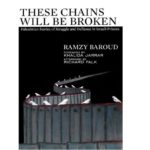

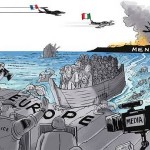


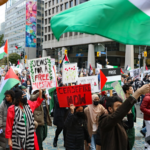

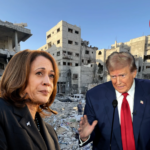







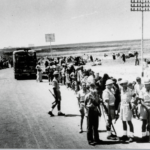







0 Comments